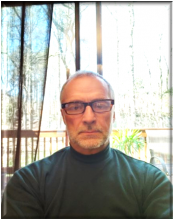
Principal Research Physicist
Sensors Directorate of the Air Force Research Lab
Abstract: The famous Lorentz reciprocity principle implies that for any wave propagating in a certain direction, there is a reciprocal wave propagating in the opposite direction, with the same speed. The transmittance coefficients for the pair of reciprocal waves are also equal to each other. The same general reciprocity principle applies to electromagnetic and acoustic waves, electric signals, etc. The Lorenz reciprocity is based on time-reversal symmetry. Therefore, to achieve asymmetry between the forward and the backward wave propagation, one must break the time-reversal symmetry. It is usually done by applying external magnetic field or incorporating magnetic materials, such as ferrites. In this talk, we will focus on the extreme manifestation of nonreciprocity, when the waves can propagate only in one of the two opposite directions. For instance, the light can freely propagate in the forward direction, while the light propagating in the backward direction is blocked. In optics and microwave, the devices providing unidirectional wave propagation are as important as the diodes in electric circuits. We outline some fundamental principles behind this and related phenomena and provide some important examples of the existing and prospective applications.
Bio: Ilya Vitebskiy is a principal research physicist at Sensors Directorate of the Air Force Research Lab. He earned his doctorate in theoretical physics in the former USSR. Before joining the Air Force Research Lab in 2011, he was a research professor at UCI. Vitebskiy is an expert in material sciences and wave propagation in complex media. He has coauthored more than 100 peer-reviewed papers and received seven U.S. and international patents. During his tenure at AFRL, he’s been working on fundamental and applied aspects of electromagnetic wave propagation in composite structures involving nonlinear, nonreciprocal and phase-changing materials.
Share
Upcoming Events
-
MSE 298 Seminar: Mechano-Electrochemical Phenomena at Ceramic Electrolyte Interfaces
-
CBE 298 Seminar: Beyond the Tailpipe - From the Science of Soot Formation to the Engineering of Carbon Nanomaterials
-
MSE 298 Seminar: Innovation In Materials Science - An Industrial R&D Perspective
-
MSE 298 Seminar: Understanding the Impact of Grain Boundary Inclination on Grain Growth Using Modeling and Simulation and Experiments
-
EECS Seminar: Mixed Conductors for Bioelectronics
